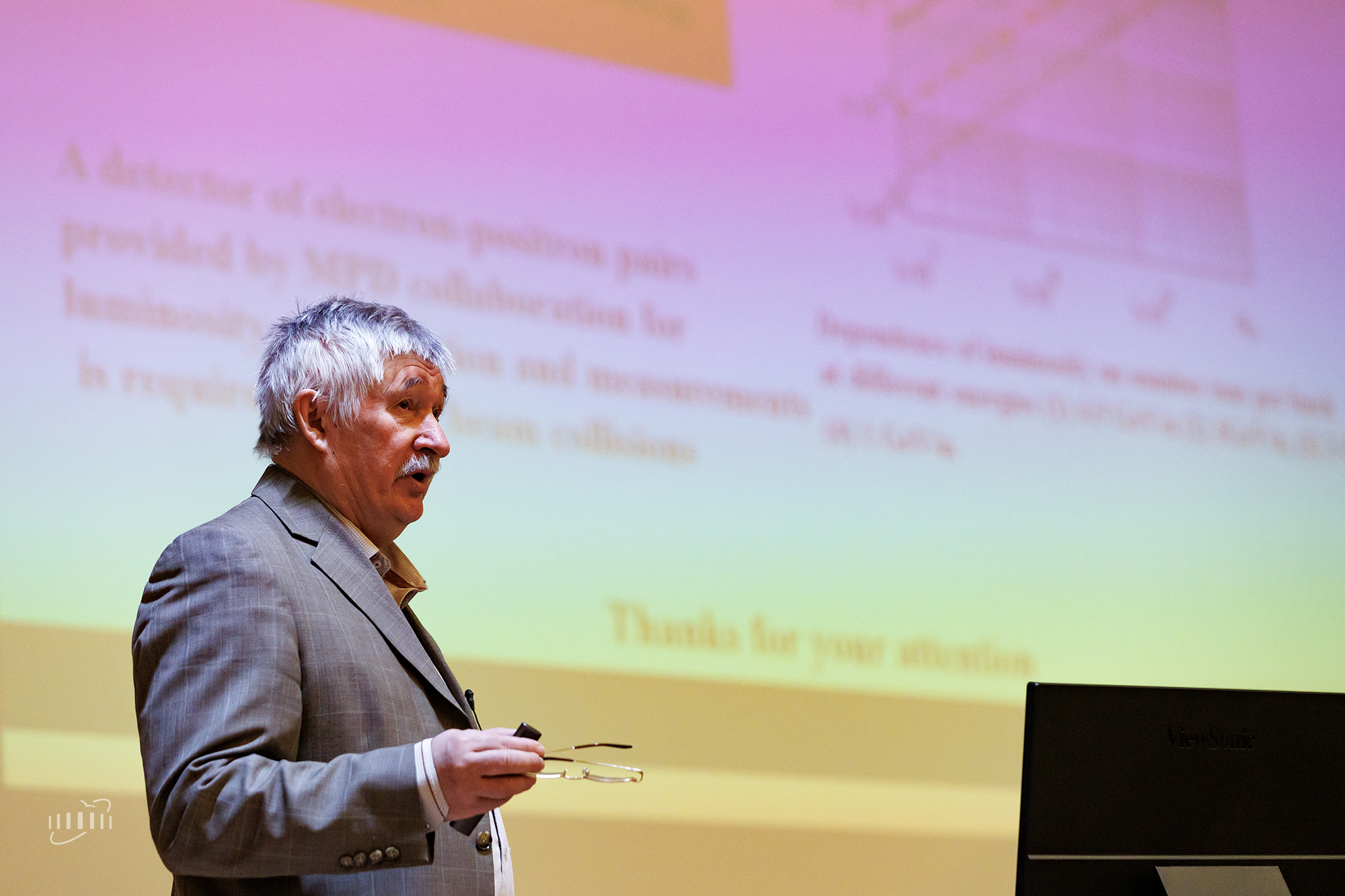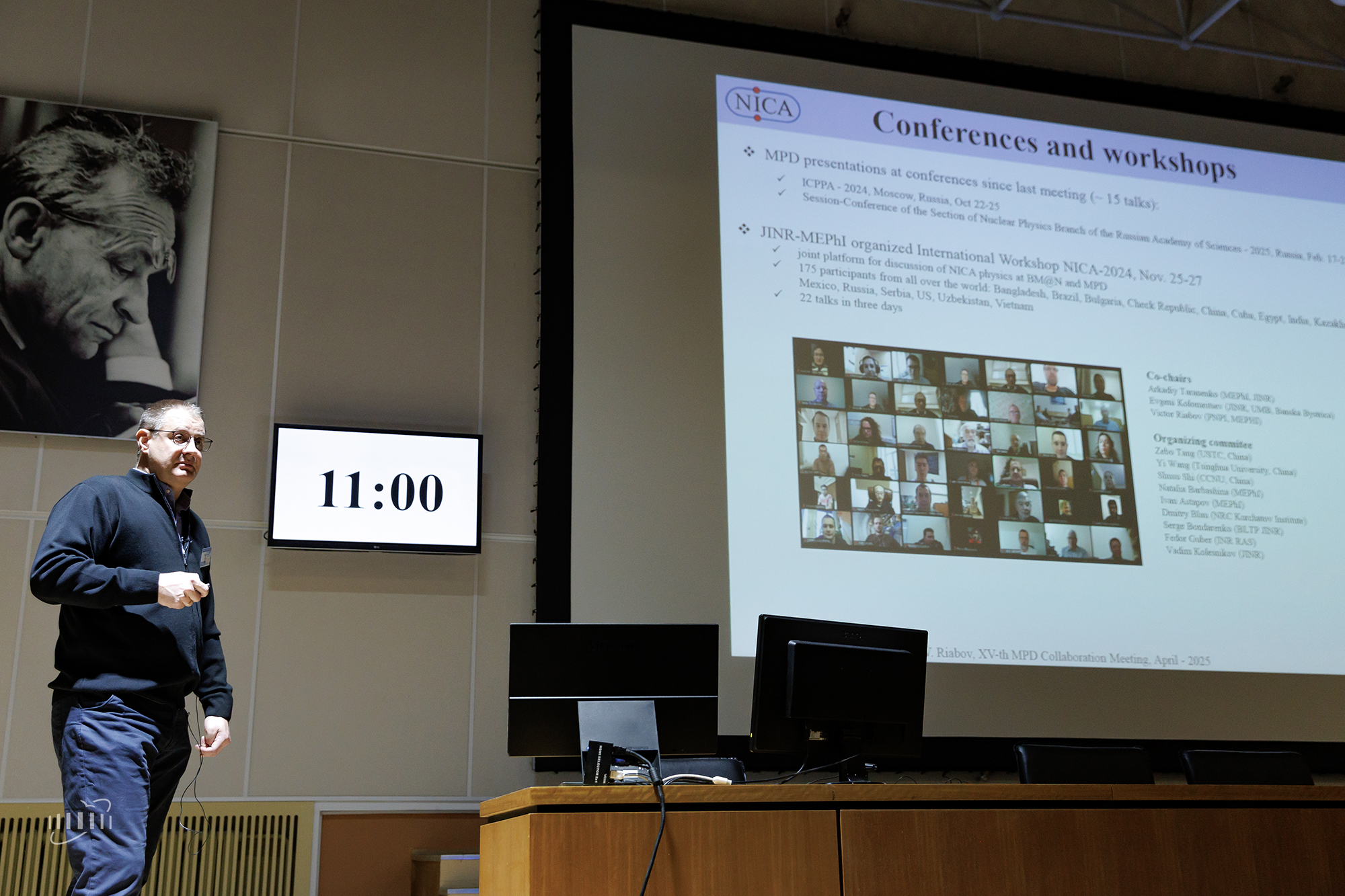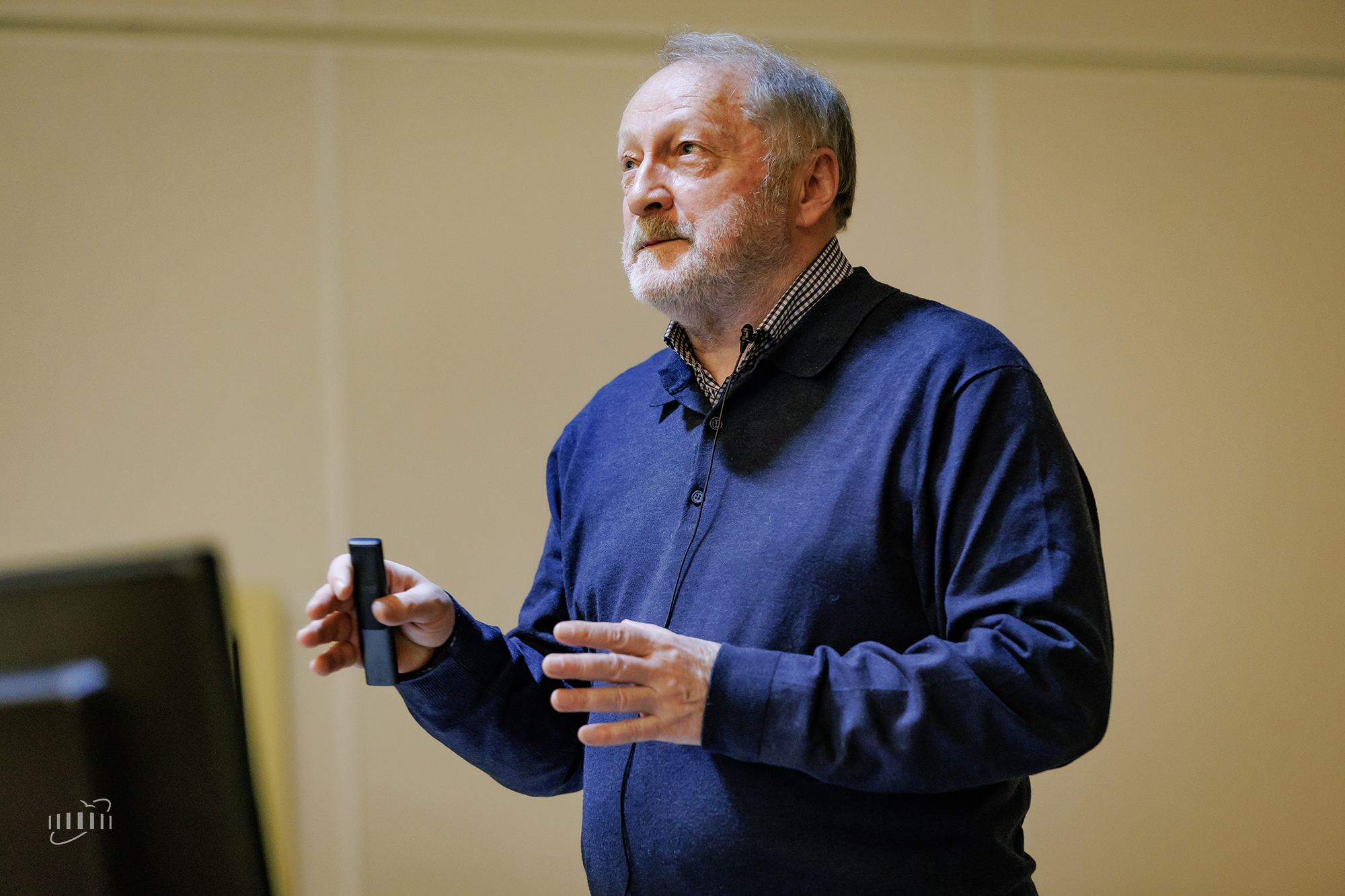15th MPD Collaboration Meeting at JINR
News, 17 April 2025
On 15–17 April 2025, the Veksler and Baldin Laboratory of High Energy Physics is hosting the 15th Collaboration Meeting of the MPD (Multi-Purpose Detector) Experiment in a hybrid format. A revised plan for the implementation of the Multi-Purpose Detector project was presented at the event. At the top of the agenda were an update on the NICA Accelerator Complex, the readiness of the detector’s main systems, and the future physics research programme.
JINR Vice-Director Vladimir Kekelidze gave a welcome speech. He noted that since the first meeting, the number of MPD Collaboration participants has more than doubled. The international team of specialists made significant progress in implementing the Multi-Purpose Detector project at the NICA Accelerator Complex. “Over these seven years, we have done a lot of important work, thanks to which we plan to start launching the facility this year and gain first experimental data shortly after,” Vladimir Kekelidze emphasised. “I believe that together we can achieve great heights in studying relativistic heavy nuclei collisions, to which we have devoted the past 15 years of our lives”.
NICA Chief Engineer Evgeny Syresin provided an update on the VBLHEP accelerator complex and discussed further plans for its launch. Special attention was paid to the work aimed at increasing the ion beam intensity. According to Evgeny Syresin, the use of an electronic cooling system allowed increasing xenon beam intensity. In particular, he discussed the results of a run at NICA’s Booster in March 2025, during which 124Xe26+ ions were accelerated to 900 MeV/nucleon.
As part of modernising Nuclotron, specialists are finishing the assembly of the system of rapid beam output to the Collider. Upon completion of its cooling and cryogenic tests, Nuclotron will be ready for new runs. The next physics run at the BM@N (Baryonic Matter at Nuclotron) Experiment is scheduled for this May and expected to last about a month, and a week in June is planned to be devoted to research at the ISCRA and SIMBO Applied Research Stations. The first beam run at the collider is set to take place in August-September 2025, which will be an important milestone in the implementation of the NICA Project.
MPD Collaboration Spokesperson, Chief Researcher at the VBLHEP JINR Elementary Particle Identification Sector Victor Riabov discussed the progress of the collaboration’s work. At the end of 2024, the MPD solenoid was cooled to an operating temperature of 4.5 K for the first time. Over the past few months, work finished on the thermal insulation of the superconducting cable at the junction of the control Dewar and the solenoid. The MPD magnet is currently back to operating temperatures. The next important step will be to map the solenoid’s magnetic field, after which it will be possible to start installing the MPD detector systems.
Speaking about the status of the main MPD subsystems, Victor Riabov noted the readiness of the time-of-flight (TOF) system, the forward hadron calorimeter (FHCAL) and the fast forward detector (FFD) modules, along with the successful test installation of a carbon fibre power frame in the solenoid. Work on the preparation of the electromagnetic calorimeter (ECal) and the time projection chamber (TPC) continues as planned.
At the 61st meeting of the JINR Programme Advisory Committee (PAC) for Particle Physics, a decision was made to extend the Multi-Purpose Detector project for the next five years. As part of the prolonged MPD programme, there will be further improvements to the experimental facility, including the installation of the silicon-based Inner Tracking System (ITS) and the development and construction of forward spectrometers. In addition, thanks to the initiative of Russia’s Ministry of Science and Higher Education aimed at supporting research at NICA, it is planned to attract more specialists from scientific and educational centres of Russia to participate in the MPD Experiment.
Victor Riabov pointed out that the collaboration has become more active, which resulted in an increased number of publications on MPD research topics in peer-reviewed journals. In 2025, scientists prepared the second collaborative article, “MPD physics performance studies in Bi+Bi collisions at √sNN = 9.2 GeV”, and sent it to a journal. They conducted extensive research into the capabilities of the MPD Experimental Facility for measuring various physical signals both in the colliding beams mode in the collider and in fixed target collisions.
“Putting the facility into operation at the end of 2025 remains our main task,” Victor Riabov summarised. “In parallel with preparing the MPD Detector for the first experiments, the collaboration continues to develop software and data analysis techniques for the most efficient work with real data”.
Head of the MPD Scientific and Experimental Department Vyacheslav Golovatyuk presented an overview of the progress of the creation and integration of key structural elements of the Multi-Purpose Detector. He noted that the production of all components for the first stage of the experiment continues with minor delays. According to the current plan, by the time the first beams collide in NICA, a detector unit capable of measuring the basic parameters of beam interaction will already be installed at the collision point. Only after ensuring stable operation of the accelerator complex and adjusting the beam parameters to certain values will the entire Multi-Purpose Detector weighing more than 1000 tonnes be installed in the beamline. By this time, it will be assemblied. “We will make all necessary efforts to prepare the experimental facility for data collection by the end of 2025,” Vyacheslav Golovatyuk emphasised.
The first day’s programme included five more presentations. The talk by VBLHEP JINR Deputy Chief Engineer Konstantin Mukhin was devoted to the preparation of the superconducting solenoid magnet. VBLHEP Sector Head Oleg Rogachevsky and a MLIT leading researcher Slavomir Hnatic discussed software development. Evgeny Antokhin (Institute of Nuclear Physics of the Siberian Branch of the Russian Academy of Science) presented the status of the Mapper manufactured in Novosibirsk for the MPD Experiment. A VBLHEP leading researcher Arkady Taranenko made a presentation titled “System and rapidity scan at MPD”. The event that concluded the first day’s programme was a closed meeting of the MPD Institutional Board focusing on organizational issues.
More than 190 specialists are taking part in the 15th MPD Collaboration Meeting. Over the three days, there will be more than 30 talks covering a wide range of topics from the creation of detector subsystems to the study of relevant physical signals. On 16 April, a guided tour of the NICA Accelerator Complex was organized for all participants present in Dubna. The results of the meeting will be announced during an open discussion on 17 April.










